Home>diy>Building & Construction>How To Start A House Construction
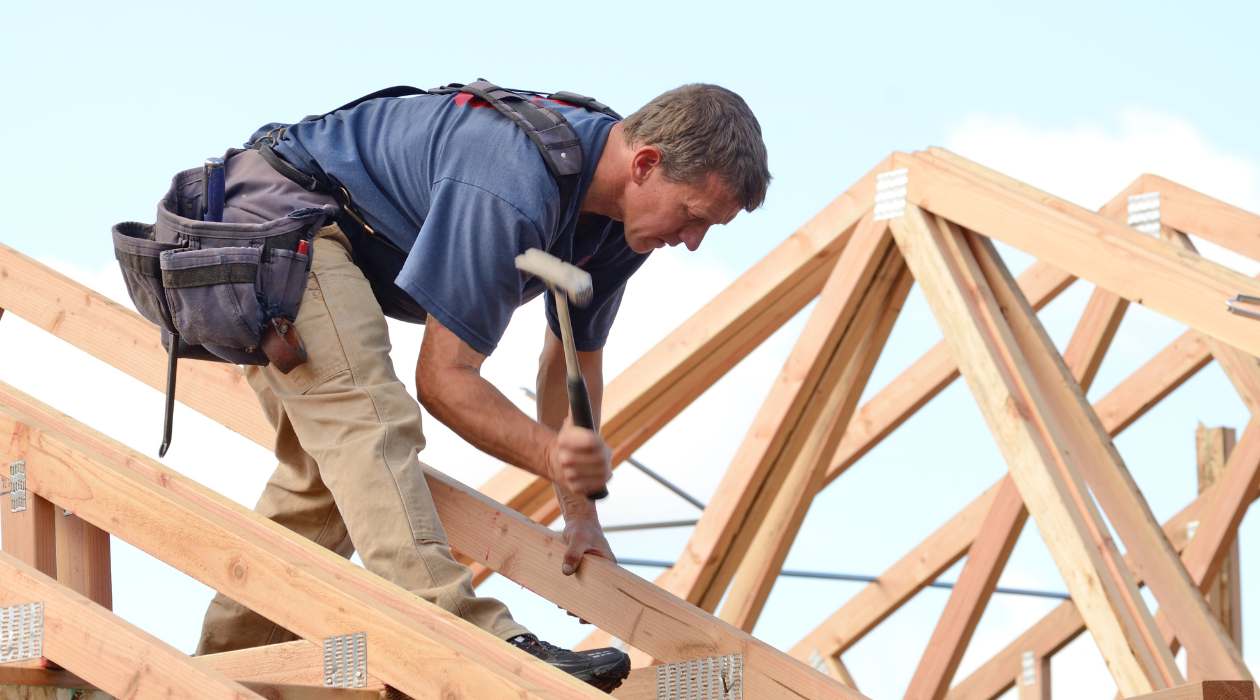

Building & Construction
How To Start A House Construction
Modified: January 24, 2024
Learn the step-by-step process of building construction with our comprehensive guide. Find expert tips, tools, and resources to start your house construction project today.
(Many of the links in this article redirect to a specific reviewed product. Your purchase of these products through affiliate links helps to generate commission for Storables.com, at no extra cost. Learn more)
Introduction
Starting a house construction project can be an exciting but complex endeavor. Whether you are building your dream home or embarking on a property development venture, careful planning and preparation are essential. From conceptualizing the design to obtaining permits and hiring contractors, there are numerous factors to consider to ensure a successful construction project.
In this article, we will guide you through the essential steps to start a house construction project. By following these guidelines, you will be well-equipped to tackle the challenges and make informed decisions along the way.
Before diving into the construction process, take the time to establish your goals and priorities. Consider the size and layout of the house, the desired architectural style, and any specific features or amenities you envision. Understanding your vision will help guide the planning and design phase.
Once you have a clear idea of what you want, it’s time to work on the blueprints. Collaborate with an architect or a designer to translate your vision into a comprehensive set of plans. This includes the layout of each room, electrical and plumbing systems, structural details, and any customization or unique features you desire.
After completing the design, you will need to obtain the necessary permits and clearances from local authorities. These approvals ensure compliance with building codes and regulations. The process may involve submitting the plans for review, paying fees, and scheduling inspections. It is crucial to familiarize yourself with the specific requirements of your locality to avoid delays or complications.
Next, explore your financing options. Building a house is a significant financial investment, and securing adequate funding is crucial. Research various sources of funding, such as banks, credit unions, or home construction loans. Consult with financial institutions to determine the best loan options for your situation. Prepare all necessary documentation and ensure you have a clear understanding of the terms and conditions.
Choosing the right contractor is another vital step in the house construction process. Look for reputable and experienced contractors who specialize in residential construction. Ask for recommendations, conduct interviews, and review their portfolios. Make sure to check their licensing, insurance, and past client reviews. Selecting a qualified contractor will help ensure the quality and timely completion of your project.
Setting a budget is essential to manage costs and avoid overspending. Consult with your contractor to establish a realistic budget that aligns with your financial capabilities. Factor in all construction-related expenses, including materials, labor, permits, and contingencies. Remember to allocate some funds for unexpected expenses or changes that may arise during the construction process.
Once you have a solid plan in place, it’s time to start preparing the construction site. This involves clearing the land, leveling the ground, and securing any necessary permits for excavation or demolition. It is crucial to follow local regulations and environmental guidelines during this phase.
The foundation is the backbone of any structure. Hire a professional foundation contractor to ensure the stability and durability of your house. They will excavate the site, pour the concrete footings, and construct the foundation walls. Careful attention to detail during this stage is critical to avoid future structural issues.
Key Takeaways:
- Proper planning, collaboration with professionals, and adherence to building codes and regulations are essential for a successful house construction project from the initial design phase to the final landscaping and exterior features.
- Thoughtful consideration, skilled professionals, and regular inspections ensure the safety, functionality, and beauty of your dream home, creating a space for lifelong memories and cherished moments with loved ones.
Read more: How To Start A Construction Business
Planning and Design
The planning and design phase is where your vision for your house begins to take shape. It’s crucial to invest time and effort in this stage to ensure that your construction project aligns with your expectations and requirements.
Start by creating a list of your must-haves and preferences for your house. Consider the number of bedrooms and bathrooms, the size of common areas, the layout of the kitchen, and any specific features or amenities you desire. This will serve as a foundation for the design process.
Collaborate with an architect or a designer to bring your ideas to life. They will assist you in creating a detailed floor plan that reflects your needs and desired layout. The floor plan should include the placement of rooms, windows, doors, and any unique features you envision.
In addition to the floor plan, consider the overall architectural style of the house. Do you prefer a modern, minimalist design or a more traditional and classic look? Communicate your preferences to the architect, and they will incorporate them into the design.
During the design process, take into account the natural surroundings of the property. Maximize natural light and ventilation by strategically placing windows and incorporating outdoor spaces such as porches or balconies.
Another important aspect of the planning and design phase is the selection of materials. Determine the types of flooring, countertops, cabinetry, and other finishes you want in your house. Consider factors such as durability, cost, and aesthetic appeal when making these choices.
Energy efficiency is a growing concern for many homeowners. Discuss energy-saving features with your architect, such as solar panels, insulation, or energy-efficient appliances. Incorporating sustainable elements in your design can help reduce your carbon footprint and save on energy costs in the long run.
As the design progresses, you may want to hire an interior designer to assist with color schemes, furniture selection, and overall aesthetics. They can help create a cohesive and visually pleasing interior that complements the architectural style of your house.
Throughout the planning and design phase, maintain open communication with your architect and other professionals involved. Regular meetings and discussions will ensure that your vision is accurately translated into the final plans. Be open to feedback and suggestions from the experts, as they have the experience and knowledge to optimize the functionality and aesthetics of your house.
Remember that altering the design during the construction phase can be costly and time-consuming. Therefore, invest the necessary time and effort upfront to finalize the plans before breaking ground.
By thoroughly planning and designing your house, you will have a solid foundation for a successful construction project. This phase sets the stage for the subsequent steps, ensuring that your dream home becomes a reality.
Acquiring Permits and Clearances
Before you can begin construction on your house, it is essential to obtain the necessary permits and clearances from the local authorities. These permits ensure compliance with building codes, safety regulations, and zoning requirements.
The specific permits and clearances required may vary depending on your location, the scope of the project, and the type of construction. It is crucial to research and understand the regulations and requirements in your area. Consulting with a local building department or a professional who is familiar with the process can provide valuable guidance.
The first step is usually submitting a building permit application. This application typically includes detailed plans and specifications of your house, along with supporting documents such as structural calculations, energy efficiency reports, and site surveys. The building department will review your application and the accompanying documents to ensure compliance with the building codes and safety standards.
In some cases, you may need to obtain additional permits or clearances based on the nature of the project. This may include permits for electrical work, plumbing installations, or septic systems. Consult with the appropriate authorities to determine the specific permits required for your construction project.
Depending on your location, there may also be zoning regulations and environmental clearances that need to be obtained. Zoning regulations govern land use, setbacks, building height, and other factors that ensure proper land development. Environmental clearances may be required to ensure that your construction project complies with environmental regulations and mitigates any potential impact on the surroundings.
Once you have submitted the necessary applications and documents, the building department will conduct a thorough review. This may involve multiple rounds of changes or revisions to ensure compliance with all regulations. It is important to be patient during this process, as it may take some time to receive final approval.
After obtaining the necessary permits and clearances, it is critical to adhere to the approved plans and follow all regulations throughout the construction process. Inspections may be required at various stages of construction to ensure that the work is being done according to the approved plans and meets the required standards.
Non-compliance with permits and clearances can result in fines, delays, and even legal consequences. It is essential to prioritize obtaining the necessary approvals and verify that all work is done in accordance with the approved plans and permits.
Acquiring permits and clearances may seem like a bureaucratic process, but it is a crucial step in ensuring the safety and legality of your construction project. By following the regulations and obtaining the necessary approvals, you can proceed with your house construction project with confidence and peace of mind.
Obtaining Financing
Obtaining financing is a crucial step in starting a house construction project. Building a house is a significant financial investment, and securing the necessary funds is essential to ensure the smooth progress of your construction project.
The first step is to assess your financial situation and determine how much you can comfortably afford to spend on your house construction. Consider both your current savings and your ability to repay any loans. Prepare a comprehensive budget that includes all expenses related to the construction, such as materials, labor, permits, and fees.
There are several financing options available for house construction, and it is important to explore and compare them before making a decision.
One common option is to obtain a construction loan. Construction loans provide funds to cover the costs of building a house, including land acquisition, construction materials, and labor. These loans typically have a shorter term and higher interest rates compared to traditional mortgage loans. Construction loans may be disbursed in various stages, known as draws, where funds are released as each phase of construction is completed.
Another option is to secure a home construction loan through a financial institution. These loans are specifically designed for home construction projects and provide funds that can be used to cover construction costs. Home construction loans typically have more flexible disbursement terms and lower interest rates compared to standard construction loans. However, eligibility requirements and loan terms may vary among lenders, so it is important to research and compare different loan options.
If you own an existing property, you may consider obtaining a home equity loan or a home equity line of credit (HELOC) to fund your construction project. Home equity loans allow you to borrow against the equity in your property, which is the difference between the market value of your property and the amount you owe on your mortgage. HELOCs provide a revolving line of credit that can be used for various purposes, including home construction.
Government-backed loans, such as FHA (Federal Housing Administration) loans or VA (Department of Veterans Affairs) loans, are also options to consider. These loans may have specific requirements and restrictions but can offer favorable terms, including lower down payments and competitive interest rates.
When applying for financing, be prepared to provide the necessary documentation, such as proof of income, credit history, tax returns, and construction plans. Working with a mortgage broker or financial advisor can help you navigate the loan application process and identify the best financing options for your situation.
Once you have obtained financing, it is important to carefully manage the funds throughout the construction process. Keep track of expenses and ensure that the funds are allocated appropriately, based on the approved construction plans and budgets. Regular communication with your lender and transparency regarding expenses will help maintain a smooth financing process.
Obtaining financing for your house construction project requires careful consideration and planning. By exploring different financing options, understanding the terms and conditions, and managing the funds effectively, you can secure the necessary funding to bring your dream home to life.
Choosing a Contractor
Choosing the right contractor is one of the most critical decisions you will make when starting a house construction project. A reputable and experienced contractor can significantly impact the quality, timeline, and success of your construction project. Here are some key factors to consider when selecting a contractor:
Experience and Expertise: Look for contractors who have extensive experience in residential construction. Review their portfolio and ask for examples of their previous work. A contractor with expertise in the specific type of house you want to build is preferable, as they will be familiar with the intricacies and requirements of your project.
Reputation and References: Research the contractor’s reputation within the industry and among previous clients. Check online reviews, testimonials, and ratings. Ask for references and reach out to past clients to get firsthand feedback about the contractor’s performance, reliability, and professionalism.
Licensing and Insurance: Ensure that the contractor is properly licensed and insured. Check if they have the necessary permits and documentation to perform the construction work in your area. Verify that they carry liability insurance to protect you in case of any accidents or damages during the construction process.
Communication and Collaboration: Effective communication and collaboration are essential for a successful construction project. Pay attention to how the contractor communicates with you during the initial consultation. Clear and open communication will help ensure that your expectations and requirements are understood and met. Choose a contractor who is responsive, attentive, and willing to listen to your ideas and concerns.
Quality of Craftsmanship: Assess the quality of workmanship by inspecting completed projects or ongoing construction sites, if possible. Look for attention to detail, precision, and overall craftsmanship. High-quality construction will result in a structurally sound and visually appealing house.
Timeline and Availability: Discuss the contractor’s availability and their ability to meet your desired timeline. Consider their workload and the number of projects they are currently handling. Ensure that they have the necessary resources and manpower to complete your project within the agreed-upon timeframe.
Contract and Pricing: Carefully review the contract documents and ensure that all important details, such as project scope, timelines, materials, and payment terms, are clearly defined. Avoid contractors who provide significantly low bids, as it may indicate subpar materials or craftsmanship. While cost is an important factor, it should not be the sole basis for your decision. Consider the contractor’s track record and the value they offer in terms of quality and service.
Obtaining multiple bids from different contractors allows you to compare costs and evaluate their proposals. However, remember that the cheapest option is not always the best choice. The contractor you ultimately choose should offer a balance of competitive pricing, expertise, and a solid track record.
Once you have selected a contractor, make sure to have a written agreement in place that includes all project details, timelines, cost breakdowns, and payment schedules. Maintain open lines of communication throughout the construction process, and regularly review the progress to ensure everything is on track.
The right contractor will not only deliver a well-constructed house but will also provide guidance, expertise, and a positive construction experience. Take the time to research and select a contractor who aligns with your vision and requirements, and you’ll be well on your way to realizing your dream home.
Read more: How To Start A Construction Firm
Setting a Budget
Setting a budget is a crucial step in any house construction project. Establishing a realistic budget will help you manage project costs, avoid overspending, and ensure that your finances are in order throughout the construction process. Here are some key considerations when setting a budget:
Evaluate Your Financial Situation: Begin by assessing your current financial situation. Consider your available savings, income, and any existing debt obligations. Determine how much you can comfortably allocate towards your house construction project without straining your finances.
Research Construction Costs: Research current construction costs in your area. Obtain quotes from contractors or consult with construction professionals to get a clear understanding of the average costs for labor, materials, permits, and other construction-related expenses. Familiarize yourself with the costs associated with different construction phases, such as foundation, framing, plumbing, electrical, and finishes.
Include Contingency: It’s important to factor in a contingency amount in your budget to account for unexpected expenses or changes that may arise during the construction process. A common practice is to allocate around 10-15% of the overall project cost for contingencies.
Prioritize Your Needs: Determine your priorities and allocate your budget accordingly. Identify the must-haves and essential elements of your house construction project, and allocate more funds towards those areas. Make a list of features and finishes that are flexible and can be adjusted if needed to stay within your budget.
Balance Quality and Cost: Strive for a balance between cost and quality. While it is important to manage expenses, be cautious about reducing costs at the expense of quality. Cutting corners or using low-quality materials may result in costly repairs or replacements in the future. Choose durable and energy-efficient materials that provide long-term value and lower maintenance costs.
Consider Long-Term Costs: Think beyond the initial construction expenses and consider long-term costs such as utilities, maintenance, taxes, and insurance. Opting for energy-efficient options, such as insulation and sustainable systems, may incur higher upfront costs but can lead to significant savings in the long run.
Get Multiple Quotes: Obtain quotes from multiple contractors and suppliers to compare costs and services. Evaluate the breakdown of costs provided and ensure that all necessary items are included in the quotes. This will help you identify any variances and make informed decisions about where to allocate your budget.
Regularly Track Expenses: Keep track of your expenses throughout the construction process. Maintain detailed records of all payments made to contractors, suppliers, and for materials. Regularly review your budget against actual costs to monitor any deviations and make necessary adjustments.
Consult with Professionals: It is beneficial to consult with construction professionals, such as contractors, architects, or quantity surveyors, to assist you in setting a realistic budget. Their expertise and knowledge of construction costs can provide valuable insights and help you make informed decisions.
Remember that unexpected expenses or changes may arise during the construction process. Having a comprehensive and flexible budget will allow you to address these challenges without jeopardizing the overall project.
By setting a well-planned budget, you will have a clear financial roadmap for your house construction project. It will help you stay on track, ensure that your expenses are manageable, and enable you to bring your dream home to life within your means.
Site Preparation
Site preparation is a crucial phase that sets the foundation for a successful house construction project. Proper site preparation ensures a level and stable ground for construction and creates the necessary infrastructure to support the building process. Here are some key steps involved in site preparation:
Clearing and Demolition: If the site is not already cleared, the first step is to remove any existing structures, vegetation, or debris. This may involve demolishing old buildings, clearing trees and shrubs, and removing rocks or other obstructions that could interfere with construction.
Surveying and Marking: Hire a professional surveyor to survey the site and establish property boundaries, topography, and other important measurements. This information will be crucial for accurately placing the house on the land and determining the proper grade for the construction.
Excavation and Grading: Excavation involves removing soil or rock to achieve the desired level and shape for the construction site. This may include cutting or filling the land as necessary. Proper grading ensures that the site has proper drainage to prevent water accumulation or erosion. It is important to consult with experts to ensure that the excavation and grading meet the required specifications.
Utility Connections: Determine the location and connections for utilities such as water, electricity, and sewer lines. Consult with utility companies to coordinate the installation of connections and ensure compliance with regulations and safety standards.
Access and Temporary Facilities: Create access points for construction vehicles and equipment. This may involve constructing temporary roads or driveways to facilitate movement to and from the construction site. Additionally, establish temporary facilities such as construction offices, storage areas, and portable toilets for the convenience of the construction team.
Erosion Control and Soil Stabilization: Implement erosion control measures to prevent soil erosion during construction. This may include installing erosion control blankets or mats, seed mulching, or installing sediment control barriers. Soil stabilization methods, such as compacting the soil or using geotextiles, can promote stability and prevent settling or settling of the foundation.
Environmental Considerations: Take into account any environmental considerations specific to the site. This may include protecting nearby water bodies, preserving protected species or habitats, or implementing erosion control measures to prevent soil runoff. Comply with local regulations and obtain any necessary environmental clearances.
Safety Measures: Ensure the construction site is safe for workers and the surrounding areas. Erect safety barriers or fences, post appropriate signage, and provide safety equipment such as hard hats and safety vests. Regularly inspect the site to identify and address potential hazards.
Permitting and Compliance: Obtain any necessary permits and ensure compliance with local building codes and regulations. This may include submitting the site preparation plans for review, paying fees, and scheduling inspections. Familiarize yourself with the specific requirements of your locality to avoid delays or complications.
Effective site preparation is essential to create a solid foundation for your house construction project. Proper planning, coordination with professionals, and adherence to safety and regulatory guidelines will ensure a smooth transition to the next phase of construction.
By investing time and effort into site preparation, you will set the stage for a successful construction project and pave the way for the realization of your dream home.
Foundation Construction
The foundation is a critical element of any house construction project, as it provides the stability and support for the entire structure. Proper foundation construction is essential to ensure the safety, durability, and longevity of your home. Here are the key steps involved in foundation construction:
Excavation: Once the site preparation is complete, the next step is to excavate the area where the foundation will be laid. Excavation involves digging a trench to the required depth and dimensions, following the architectural plans and local building codes.
Footings: Footings are concrete structures placed below the ground level to distribute the weight of the house evenly and provide solid support. The size and depth of the footings depend on factors such as the soil type, the size of the house, and the local building regulations. Reinforcing steel bars, known as rebar, are often used to strengthen the footings.
Formwork: Formwork consists of temporary structures, usually made of wood or metal, that are used to create the shape and dimensions of the foundation. Formwork is carefully constructed to match the design and specifications of the foundation walls and footings.
Pouring Concrete: Concrete is commonly used for foundation construction due to its strength and durability. Once the formwork is in place, concrete is poured into the excavated area, filling the footings and forming the foundation walls. The concrete is typically reinforced with rebar to enhance its strength.
Leveling and Finishing: After pouring the concrete, the surface is leveled and smoothed using a screed. This ensures that the foundation is even and provides a solid base for the rest of the construction. Finishing techniques may include troweling the surface to achieve a smooth and even texture.
Curing: Curing is the process of allowing the concrete to harden and gain strength over time. It is essential to take proper curing measures to ensure the longevity and structural integrity of the foundation. This may include covering the foundation with a curing compound or using water curing methods, such as periodic wetting and covering with plastic sheeting.
Waterproofing: To protect the foundation from water damage and moisture infiltration, waterproofing measures are applied. This may involve applying a waterproofing membrane or coating to the exterior side of the foundation walls and installing a drainage system, such as a perimeter drain or weeping tiles.
Inspections: Throughout the foundation construction process, inspections by building officials or inspectors may be required. These inspections are conducted to ensure compliance with building codes, structural integrity, and proper installation of reinforcement and waterproofing measures.
Backfilling: Once the foundation has been constructed and inspected, backfilling is performed to fill the space around the foundation walls. Backfill material, usually compacted soil, is added in layers and carefully compacted to provide additional support and stability to the foundation.
Proper foundation construction is crucial to the overall structural integrity of your house. Hiring experienced professionals and ensuring compliance with building codes and regulations will help ensure a solid foundation for a successful construction project. With a well-built foundation in place, you can move on to the next phases of construction with confidence and peace of mind.
Before starting a house construction, make sure to obtain all necessary permits and approvals from local authorities. This will ensure that your project is compliant with building codes and regulations.
Framing and Structure
The framing and structure phase is an exciting stage of the house construction process where the skeletal framework of your home begins to take shape. This phase involves constructing the walls, floors, and roof, forming the structure that will support the entire house. Here are the key steps involved in framing and structure construction:
Layout and Measurements: The first step is to carefully mark and measure the locations of walls, doors, windows, and openings based on the architectural plans. Precise measurements and accurate layout are crucial to ensure the proper alignment and dimensions of the structure.
Wall Framing: Wall framing involves the assembly of vertical studs, horizontal plates, and other framing members to create the walls of the house. Framing is typically done using wood or metal studs. This process includes cutting and positioning the studs, installing headers and sills for openings, and attaching them to the foundation and each other.
Floor Framing: Floor framing consists of constructing the horizontal framework that supports the floors of each level. This includes installing joists or trusses, bridging for stability, and subflooring. The framing is designed to distribute the weight evenly and provide a solid base for the floors.
Roof Framing: Roof framing involves the construction of the framework that supports the roof structure. This includes installing rafters, ridge boards, and collar ties or trusses. The roof framing is designed to provide stability, allow for proper drainage, and support the weight of the roof materials.
Sheathing: Sheathing refers to the installation of panels or boards on the exterior side of the framed walls and roof. Common sheathing materials include plywood or oriented strand board (OSB). Sheathing is necessary to provide additional structural integrity, stability, and resistance to wind and weather elements.
Window and Door Installation: Once the walls are framed and sheathed, windows and doors are installed in their designated openings. This involves fitting the frames into the rough openings, securing them, and ensuring proper alignment and weatherproofing.
Structural Bracing and Tie-Ins: Structural bracing elements, such as diagonal braces or shear walls, are installed to provide additional stability, especially in areas prone to seismic activity or high winds. Tie-ins are made to connect different parts of the structure, ensuring that all components work together as a unified system.
Inspections: Throughout the framing and structure phase, inspections by building officials or inspectors may be required. These inspections are conducted to verify compliance with building codes, structural integrity, and the proper installation of framing components, sheathing, and tie-ins.
Utilities Rough-In: During the framing process, rough-in work for electrical, plumbing, and HVAC (heating, ventilation, and air conditioning) systems is typically done. This involves running the necessary wires, pipes, and ductwork within the wall and floor cavities according to the architectural and engineering plans.
Exterior Finishes: After the framing is complete, it’s time to move on to the exterior finishes. This may include installing siding materials, such as vinyl, brick, or stucco, and any other exterior elements like trim, fascia, or soffits. These finishes enhance the aesthetic appeal and protect the structure from the elements.
Framing and structure construction is a critical phase that forms the backbone of your house. It requires skilled craftsmanship, precise measurements, and adherence to building codes and regulations. By ensuring a solid and well-built frame, you set the stage for the next phases of construction, ultimately bringing your dream home closer to reality.
Read more: Where To Start Building A House
Plumbing and Electrical Installation
Plumbing and electrical installation are two vital components of a house construction project that involve ensuring the functionality, safety, and efficiency of your home. Proper planning, careful installation, and adherence to building codes and regulations are crucial in these stages. Here are the key steps involved in plumbing and electrical installation:
Plumbing Installation:
1. Rough-In: The rough-in stage involves installing the primary plumbing lines before the walls are closed up. This includes the main water supply line, drain and vent pipes, and any specialized plumbing systems required for your house, such as water heaters or irrigation systems. Plumbing lines are carefully positioned and connected to ensure efficient water supply and drainage.
2. Fixtures and Appliances: Once the rough-in plumbing is completed and the walls are ready, fixtures and appliances can be installed. This includes sinks, toilets, showers, bathtubs, faucets, and appliances such as dishwashers or washing machines. Proper installation and sealing are crucial to prevent leaks and ensure optimal performance.
3. Water Supply Connections: Water supply connections involve linking the main water line to the individual fixtures and appliances. Each fixture or appliance requires a properly sized water supply line with shut-off valves for maintenance or emergencies. These connections must be secure and leak-free.
4. Drainage and Venting: Proper drainage and venting ensure the efficient flow of wastewater and prevent the buildup of gases or sewer odors. Drain lines should be properly sloped for effective drainage, while vent pipes are installed to release air pressure and allow wastewater to flow smoothly.
5. Testing and Inspections: After completing the plumbing installation, testing and inspections are conducted to confirm that everything is working correctly. Tests may include checking for leaks, water pressure, and flushing and draining fixtures to ensure proper functionality. Building officials or inspectors may conduct inspections to verify compliance with plumbing codes and regulations.
Electrical Installation:
1. Wiring: The electrical installation begins with wiring the house according to the electrical plan. This involves running electrical cables through the walls, floors, and ceilings, connecting them to outlets, switches, and lighting fixtures. Different types of wires are used for various purposes, such as lighting, power outlets, and specialized electrical needs.
2. Service Panel Installation: The service panel, also known as the breaker box or electrical panel, is installed to distribute electricity throughout the house. It consists of circuit breakers or fuses that control the flow of electricity to different areas or circuits. The panel should be properly sized and equipped to handle the electrical load required by the house.
3. Outlet and Switch Installation: Outlets, switches, and receptacles are installed at appropriate locations according to the electrical plan. They are wired and connected to the electrical system, providing power outlets for appliances, lighting controls, and other electrical needs. It is crucial to ensure proper grounding and proper wiring techniques to prevent electrical hazards and comply with safety standards.
4. Lighting Fixtures: Lighting fixtures, including overhead lights, recessed lighting, and sconces, are installed and wired. Careful consideration should be given to the placement, type, and design of lighting fixtures to meet both functional and aesthetic requirements.
5. Testing and Inspections: After completion, the electrical system undergoes testing and inspections to ensure its safety and compliance. Electricians perform tests to verify proper wiring, grounding, and functionality. Inspections by local authorities or building inspectors may be required to ensure compliance with electrical codes and regulations.
Plumbing and electrical installations require specialized knowledge and expertise. Hiring licensed and experienced professionals in these fields is essential to ensure safety and efficiency. Effective coordination between plumbers, electricians, and other professionals involved in the construction process is crucial during these installation phases.
By properly planning, installing, and testing the plumbing and electrical systems in your new house, you can enjoy a functional, safe, and comfortable living environment for years to come.
Roofing and Exterior Finishes
Roofing and exterior finishes are the final touches that bring your house construction project to completion. These elements not only provide protection from the elements but also contribute to the aesthetic appeal and overall durability of your home. Here are the key steps involved in the roofing and exterior finishes phase:
Roofing:
1. Roof Structure Preparation: Before installing the roofing materials, the roof structure is evaluated and prepared. This includes ensuring proper sheathing, fixing any damaged or weak areas, and making sure the structure is sound and ready for the roofing installation.
2. Underlayment: A layer of underlayment, usually asphalt-saturated felt or synthetic material, is installed on the roof deck to provide an additional layer of protection against moisture and potential leaks. The underlayment acts as a barrier between the roofing materials and the roof deck.
3. Roofing Material Selection: Choose the appropriate roofing material based on your preferences, climate, and architectural style. Common roofing materials include asphalt shingles, metal roofing, clay or concrete tiles, slate, or wood shakes. Consider factors such as durability, maintenance requirements, energy efficiency, and overall aesthetics.
4. Roofing Installation: The roofing materials are installed according to the manufacturer’s instructions and industry best practices. This involves placing the shingles, tiles, or other roofing materials in overlapping layers, securing them using nails or fasteners, and ensuring proper alignment and coverage. Flashing is installed around roof penetrations, such as chimneys or skylights, to prevent water infiltration.
5. Gutters and Downspouts: Gutters and downspouts are installed to direct rainwater away from the house. This helps prevent water damage to the foundation, walls, and landscaping. Properly sized and installed gutters and downspouts ensure effective rainwater management and drainage.
Exterior Finishes:
1. Siding: The choice of siding material depends on your preferences, budget, and architectural style. Common siding options include vinyl, fiber cement, wood, stucco, brick, or stone. The siding is installed on the exterior walls, providing protection from the elements while enhancing the aesthetic appeal of your home.
2. Trim and Fascia: Trim and fascia elements are installed to provide finishing touches and add architectural detail to the exterior. Trim includes the decorative moldings surrounding windows, doors, and corners of the house. Fascia is installed along the roofline, covering the ends of the roof rafters and providing a smooth transition from the roof to the siding.
3. Windows and Doors: Install windows and doors, ensuring proper fit, weather sealing, and security. A variety of styles and materials are available to match your architectural design and preferences. Consider energy-efficient options with double glazing and proper insulation to enhance comfort and reduce utility costs.
4. Painting and Finishing: Apply exterior paint or other finishes to the siding, trim, doors, and other exterior surfaces. Choose colors that complement the design and aesthetics of your home. Proper preparation, priming, and application techniques ensure the longevity and visual appeal of the painted surfaces.
5. Landscaping and Outdoor Features: Complete the exterior finishes by landscaping the surrounding area. This may include planting trees, shrubs, and flowers, installing pathways or driveways, and adding outdoor features such as a patio, deck, or garden. Landscaping enhances the curb appeal and creates an inviting outdoor environment.
Proper installation of roofing and exterior finishes is crucial for the protection, functionality, and visual appeal of your house. Working with experienced professionals ensures that the materials are installed correctly and in compliance with the manufacturer’s specifications and local building codes.
By carefully selecting roofing materials and exterior finishes that suit your style and climate, you can create a beautiful and durable exterior that enhances the overall value and appeal of your home for years to come.
Interior Finishes
The interior finishes phase is where your house construction project starts to come to life, transforming a bare structure into a comfortable and inviting living space. This phase focuses on the interior elements that enhance the functionality, aesthetics, and personalization of your home. Here are the key steps involved in the interior finishes phase:
Walls and Ceilings:
1. Drywall Installation: Drywall, also known as gypsum board or plasterboard, is installed on the walls and ceilings. Drywall sheets are carefully cut and secured to create smooth surfaces. Joints and seams are taped, covered with joint compound, and sanded to create seamless and even finishes.
2. Painting: Once the drywall is installed and prepared, interior painting is performed. Choose paint colors that reflect your style and create the desired atmosphere for each room. Proper surface preparation, priming, and painting techniques are used to ensure a professional and durable finish.
3. Trim and Molding: Install trim and molding elements to add character and detail to the interior. Baseboards, crown molding, window and door casing, and other decorative trim pieces are installed. These finishes provide a clean transition between walls and floors, and they enhance the overall aesthetic appeal of the interior.
Floors:
1. Flooring Selection: Choose the type of flooring that best suits each room’s functionality, style, and your preferences. Common options include hardwood, laminate, tile, carpet, or vinyl. Consider factors such as durability, maintenance requirements, comfort, and aesthetics when selecting the flooring materials.
2. Flooring Installation: Flooring installation varies depending on the material chosen. Hardwood or laminate flooring is typically laid in planks, while tile or vinyl is installed in individual pieces. Carpet is stretched and secured on an underpad. Proper installation techniques are followed to ensure a level, secure, and visually appealing floor finish.
Doors and Hardware:
1. Door Installation: Install interior doors, including bedroom doors, bathroom doors, closet doors, and any other entries or passages within the house. Proper alignment, secure installation, and smooth operation of doors are ensured. Pay attention to soundproofing features and privacy needs for specific areas, such as bedrooms and bathrooms.
2. Hardware and Accessories: Install door handles, knobs, hinges, and other hardware for functional and decorative purposes. Also, install accessories such as towel racks, toilet paper holders, and hooks in bathrooms, as well as curtain rods or blinds for windows. These finishing touches add convenience and enhance the overall look of the interior.
Finishing Touches:
1. Lighting Fixtures: Install a variety of lighting fixtures, such as overhead lights, wall sconces, and recessed lighting. Consider the functionality and ambiance you want to create in each room. Choose energy-efficient fixtures and appropriate lighting options for different areas, such as task lighting in kitchens or accent lighting in living rooms.
2. Cabinetry and Countertops: Install kitchen and bathroom cabinets, along with countertops. Choose materials and finishes that match your style and provide the desired functionality and durability. Pay attention to proper installation and alignment, ensuring that doors and drawers open and close smoothly.
3. Plumbing and Electrical Fixtures: Install plumbing fixtures such as sinks, faucets, toilets, showers, and bathtubs. Also, install electrical fixtures like light switches, outlets, and dimmer switches. Ensure that all fixtures are properly connected, securely mounted, and aligned as per the design and functionality requirements.
4. Interior Design and Decoration: Finally, personalize your spaces with furniture, window treatments, wall art, and decorative accessories. Choose furnishings and decor that complement your style and create a cohesive and visually appealing interior. Consider functionality, comfort, and the flow of each room when arranging furniture and decor elements.
The interior finishes phase allows you to customize your home and create personalized spaces that reflect your style and preferences. Whether you prefer a contemporary, traditional, or eclectic design, paying attention to detail and following the proper installation techniques will result in a beautiful and functional interior space.
By adding the finishing touches to your house construction project, you transform it into a welcoming home where you can enjoy comfort and functionality for years to come.
Final Inspections and Approvals
The final inspections and approvals phase is the last critical step in the house construction process. It involves a thorough examination of the completed project to ensure compliance with building codes, regulations, and safety standards. Here are the key steps involved in the final inspections and approvals phase:
Building Inspections:
1. Plumbing Inspection: A plumbing inspector will assess the completed plumbing system to ensure proper installation and compliance with plumbing codes. This includes checking for leaks, proper drainage, venting, and adherence to building standards for fixtures and water supply connections.
2. Electrical Inspection: An electrical inspector will examine the electrical system to verify that it is correctly installed, grounded, and compliant with electrical codes and safety regulations. This includes checking wiring, outlets, lighting fixtures, and the electrical service panel to ensure proper functionality and safety.
3. Structural Inspection: A structural inspector will assess the overall structural integrity of the house. This includes evaluating the foundation, framing, and other structural elements to ensure stability, load-bearing capacity, and compliance with structural engineering plans and building codes.
4. Mechanical Inspection: A mechanical inspector will review the HVAC (heating, ventilation, and air conditioning) system, including the installation of ductwork, ventilation, and any mechanical equipment. The inspection ensures compliance with mechanical codes, energy efficiency requirements, and proper functioning of the system.
Fire and Safety Inspections:
1. Fire Safety Inspection: A fire safety inspector will check the house for compliance with fire safety codes. This includes the proper installation of smoke alarms, carbon monoxide detectors, fire extinguishers, and fire-resistant materials. They will also assess the accessibility of exits and ensure compliance with emergency egress requirements.
2. Building Code Compliance: Building inspectors will conduct a comprehensive review of the house to ensure compliance with all applicable building codes and regulations. This includes aspects such as structural integrity, electrical and plumbing systems, energy efficiency, fire safety measures, and accessibility requirements.
Approvals and Certifications:
1. Certificate of Occupancy: Upon successful completion of all inspections and approvals, the local authority will issue a Certificate of Occupancy (CO). This document indicates that the house is safe and suitable for occupancy, complying with all building codes and regulations. The CO is typically required before moving into the house.
2. Final Approvals: Depending on your location, other final approvals may be necessary, such as health department approvals for septic systems or well water, or environmental certifications for sustainable features. These approvals ensure that your house construction project meets all required standards and regulations.
Final inspections and approvals are essential to ensure the safety, compliance, and quality of your completed house construction project. It is crucial to address any deficiencies or recommendations identified during the inspections and make the necessary corrections to obtain the required approvals.
Coordinating with the building inspectors, addressing any deficiencies promptly, and complying with all regulations will lead to a successful completion of your house construction project. Once you have obtained the necessary approvals, you can move forward with confidence and start enjoying your new home.
Read more: Where To Start With House Renovation
Landscaping and Exterior Features
The landscaping and exterior features phase marks the final touch in transforming your house construction project into a beautiful and welcoming home. This phase focuses on enhancing the outdoor areas surrounding your house, creating an inviting and visually appealing environment. Here are the key steps involved in landscaping and adding exterior features:
Plan and Design:
1. Assess the Site: Evaluate the existing outdoor space, taking into consideration factors such as the size of the property, topography, soil quality, and the existing vegetation. Understanding these elements will help in creating a landscaping design that maximizes the potential of the space.
2. Define Functional Areas: Determine the purpose of each outdoor area. Consider elements such as seating areas, dining spaces, pathways, play areas, gardens, or recreational areas. By defining the functionality of each area, you can better design and allocate the space according to your needs and preferences.
3. Landscape Design: Work with a professional landscaper or use your own creativity to create a landscape design that includes elements such as plants, trees, shrubs, hardscapes, and water features. Take into account factors such as aesthetics, maintenance requirements, and the local climate.
Outdoor Spaces:
1. Patio or Deck: Construct an outdoor patio or deck where you can relax, entertain guests, or enjoy outdoor meals. Choose suitable materials and furniture that complement the style of your house and accommodate your desired outdoor activities. Consider factors such as sun exposure, privacy, and accessibility.
2. Pathways and Driveways: Install pathways and driveways that provide safe and convenient access to different areas of your property. Select materials such as concrete, pavers, or gravel that suit your style and budget. Properly designed and installed pathways enhance the overall aesthetics and functionality of your outdoor space.
3. Gardens and Plantings: Enhance the beauty of your outdoor space by creating gardens and planting beds. Choose plants and flowers that thrive in your climate and complement the design of your landscape. Consider elements such as color, texture, and seasonal interest to create a visually appealing garden.
4. Outdoor Lighting: Install outdoor lighting fixtures to enhance the ambiance and functionality of your outdoor spaces. Illuminate pathways, highlight architectural features, and create a warm and inviting atmosphere. Consider energy-efficient lighting options and strategically place fixtures to ensure adequate visibility and safety at night.
Water Features and Hardscapes:
1. Water Features: Incorporate water features such as ponds, fountains, or waterfalls to add beauty, tranquility, and a sense of serenity to your outdoor space. These features can provide visual interest, attract wildlife, and create a soothing ambiance.
2. Hardscapes: Integrate hardscape elements such as retaining walls, fences, or stone pathways into your landscape design. These elements can define spaces, add dimension, and provide functional areas for seating, dining, or outdoor entertaining. Consider materials that complement the style and architecture of your house.
3. Outdoor Structures: Install functional outdoor structures such as gazebos, pergolas, or sheds that can provide shade, storage space, or additional seating areas. These structures not only serve practical purposes but also add architectural interest and character to your outdoor space.
Maintenance and Irrigation:
1. Routine Maintenance: Develop a regular maintenance plan for your landscaping to keep it healthy and vibrant. This includes tasks such as mowing the lawn, trimming plants, removing weeds, and fertilizing as needed. Regular maintenance will help preserve the beauty and functionality of your outdoor space.
2. Irrigation Systems: Install an efficient irrigation system to ensure proper watering of your landscaping. Consider options such as drip irrigation or programmable sprinklers to conserve water and provide adequate moisture to plants. Adjust the irrigation schedule based on seasonal demands and the specific needs of your plants.
Landscaping and exterior features play a vital role in creating a harmonious connection between your house and the surrounding environment. By carefully designing and crafting your outdoor space, you can enhance the beauty, functionality, and enjoyment of your home for years to come.
Conclusion
Embarking on a house construction project is an exciting and rewarding journey. From the initial planning and design phase to the final touches of landscaping and exterior features, every step requires thoughtful consideration, attention to detail, and collaboration with professionals who can help bring your vision to life. By following the comprehensive guidelines outlined in this article, you can navigate the process with confidence and achieve a successful outcome.
During the planning and design phase, take the time to establish your goals, envision your dream home, and work closely with architects or designers to create a detailed blueprint. Acquiring the necessary permits and clearances is essential to ensure compliance with building codes and regulations.
Obtaining financing that suits your budget and securing the services of a reputable contractor are crucial steps in making your project a reality. Collaborate with the contractor to set realistic timelines and budgets, keeping in mind that unexpected expenses or changes may arise during construction.
Proper site preparation, foundation construction, framing, plumbing, electrical installation, and roofing are significant stages that require skilled professionals to ensure the safety, durability, and functionality of your home. The interior and exterior finishes bring personality and style to your living space, reflecting your tastes and preferences.
Finally, landscaping and exterior features provide the finishing touches that enhance the curb appeal, create outdoor living spaces, and complement the overall design of your house. Thoughtful planning, proper installation, and regular maintenance will help create a beautiful and inviting outdoor environment.
Throughout the entire house construction journey, it is important to stay informed, communicate effectively with everyone involved, and be adaptable to any challenges or changes that may arise. Regular inspections and approvals by building officials ensure that the construction complies with codes and regulations, providing you with the peace of mind that your home is safe and well-built.
At the end of this transformative process, you will have created a place that reflects your personality, meets your needs, and becomes your sanctuary. A well-designed and thoughtfully constructed house will not only provide shelter and comfort but also serve as a backdrop for lifelong memories and cherished moments shared with loved ones.
Remember, building your dream home is a culmination of your vision and the expertise of professionals working together to create a space that you will cherish for years to come. Enjoy the process, stay organized, and embrace the journey that lies ahead as you bring your dream home to life.
Frequently Asked Questions about How To Start A House Construction
Was this page helpful?
At Storables.com, we guarantee accurate and reliable information. Our content, validated by Expert Board Contributors, is crafted following stringent Editorial Policies. We're committed to providing you with well-researched, expert-backed insights for all your informational needs.

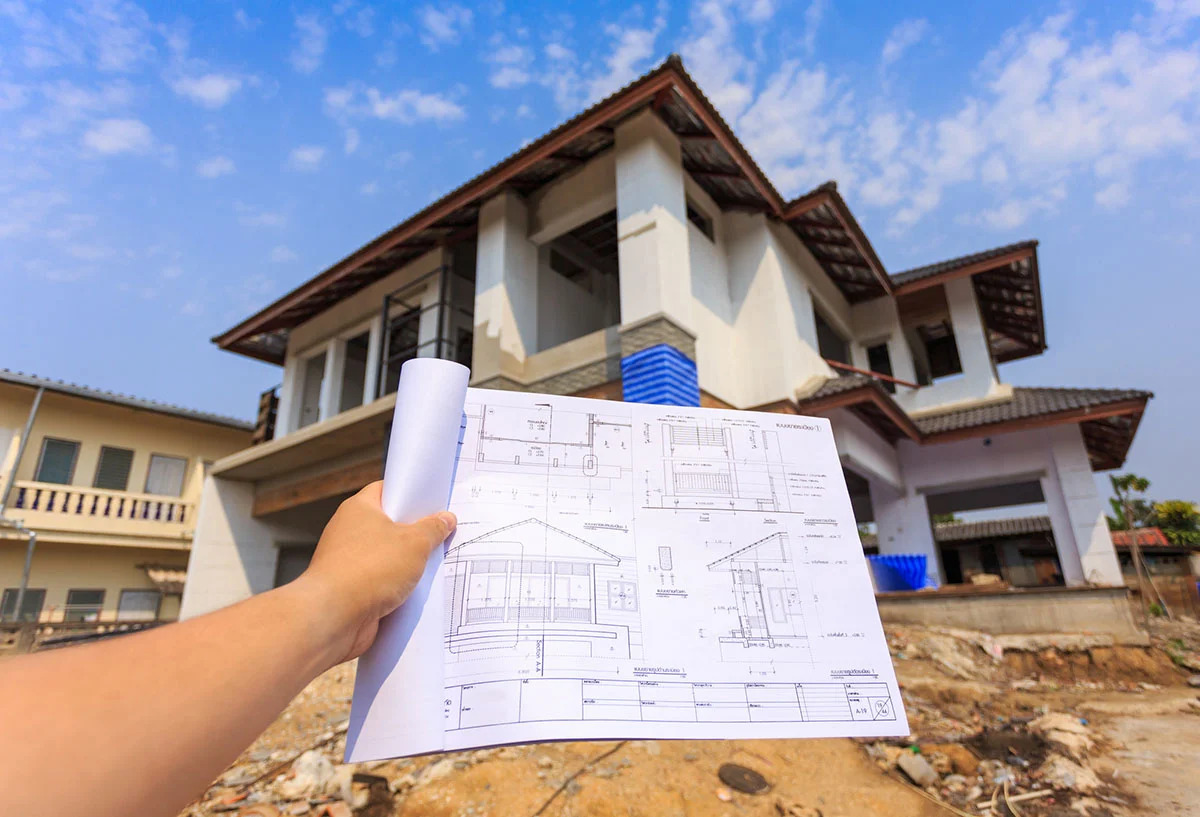
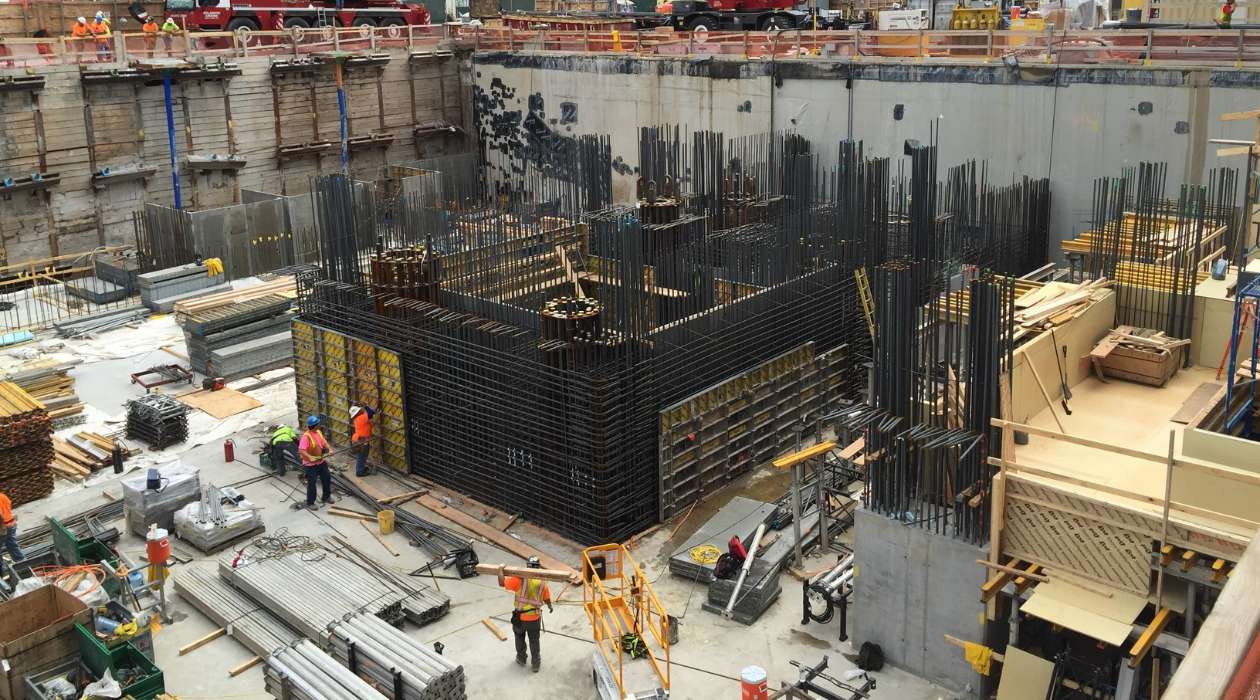

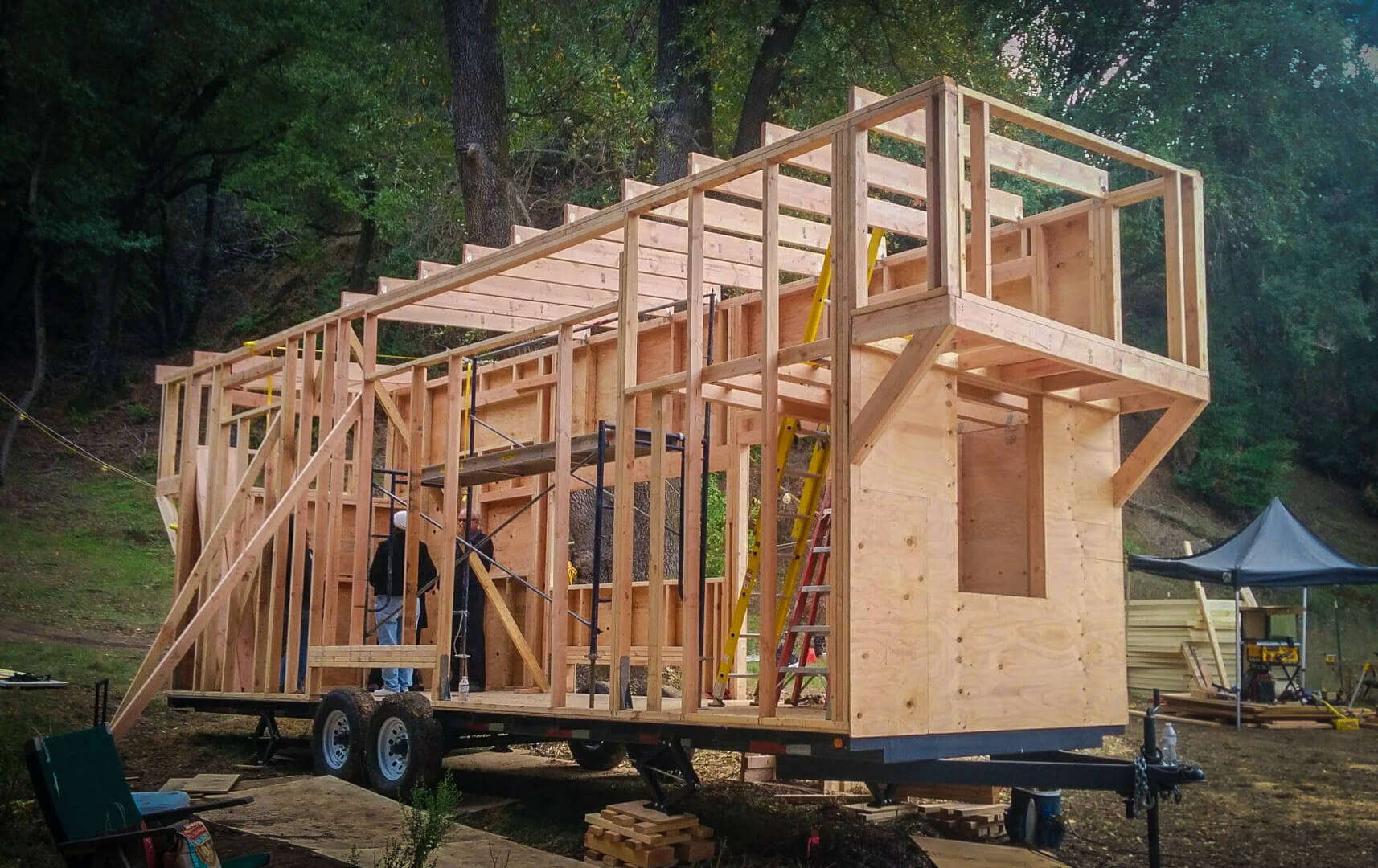

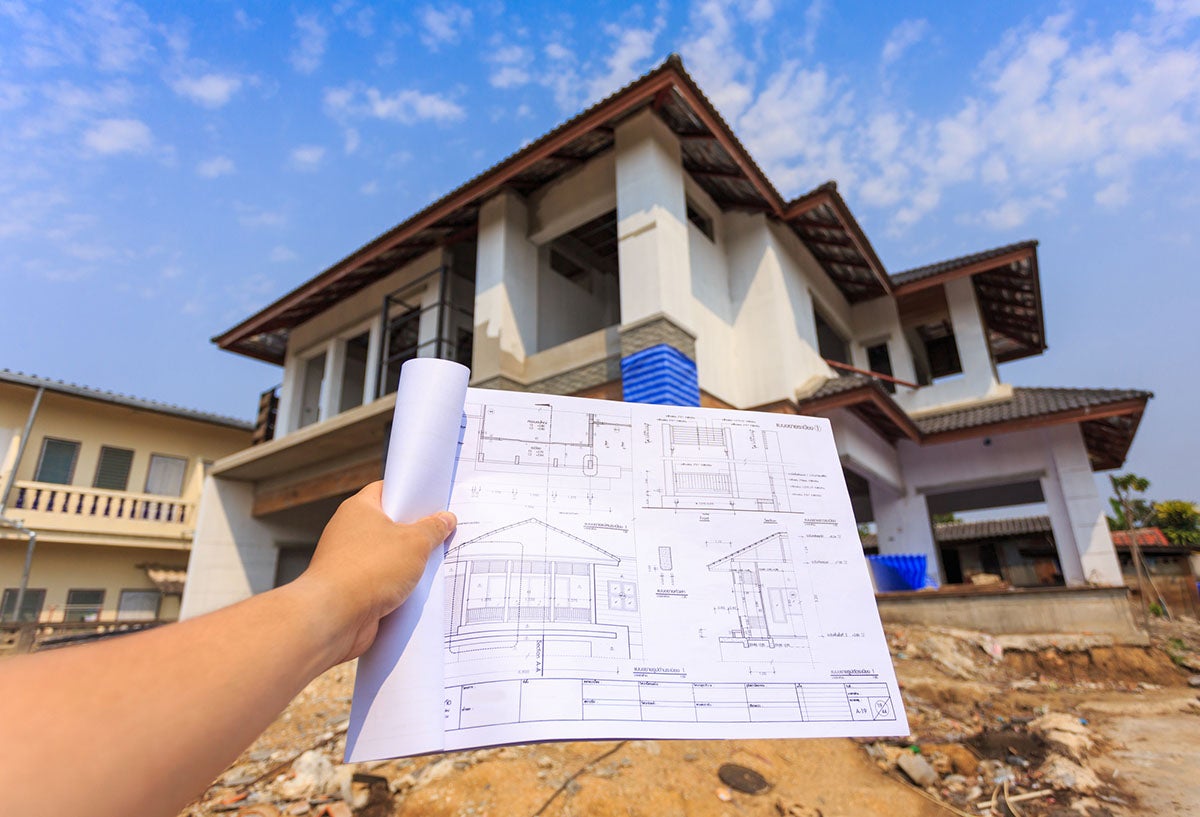

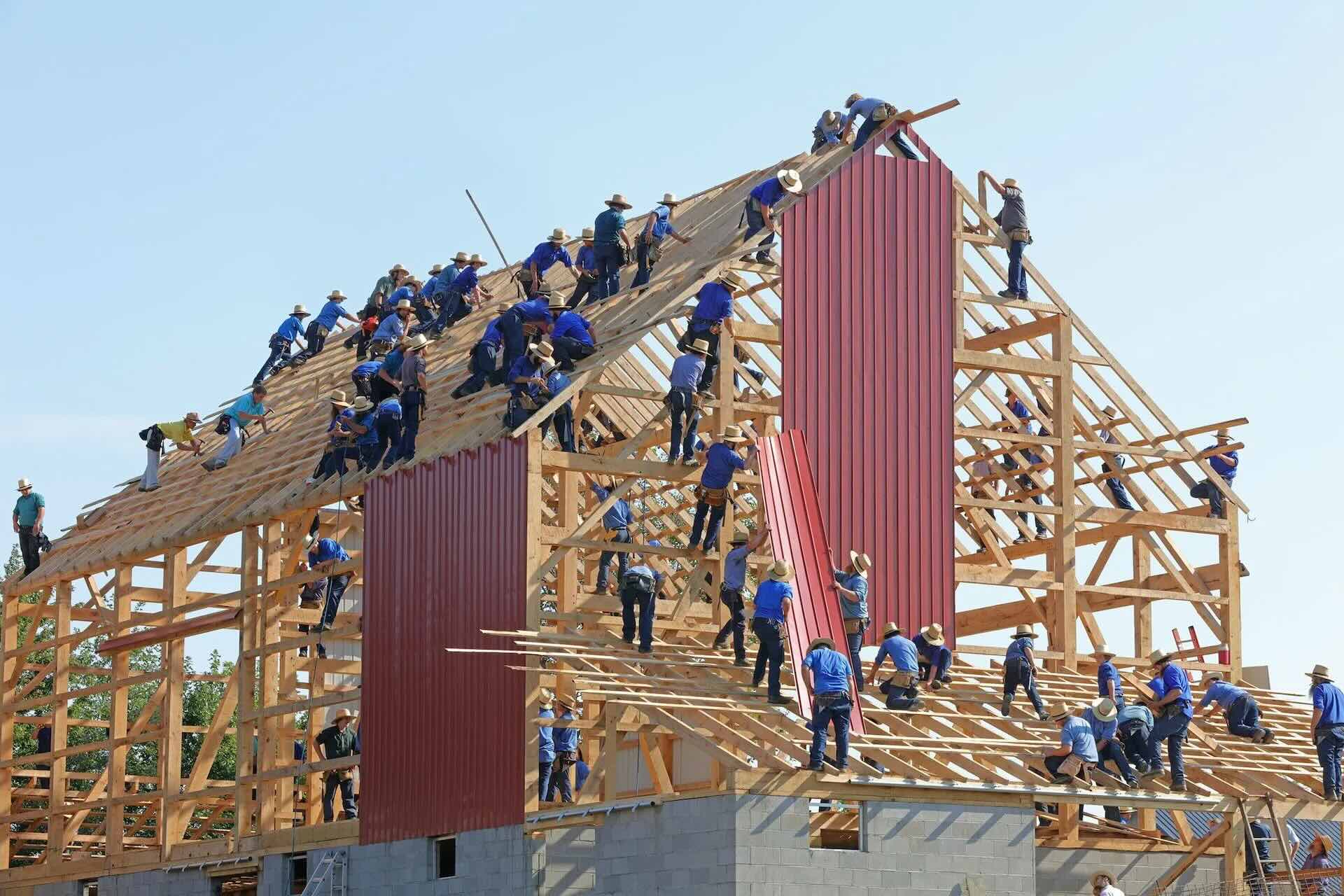
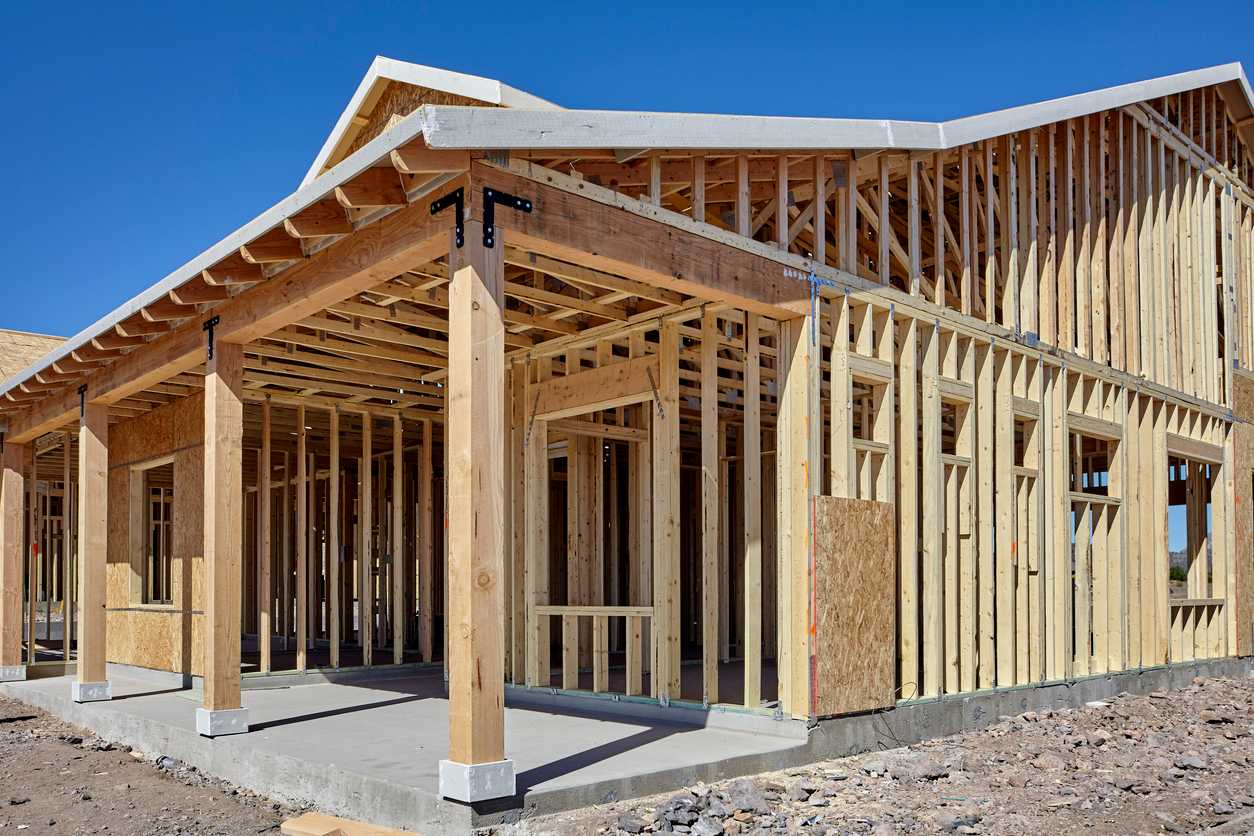

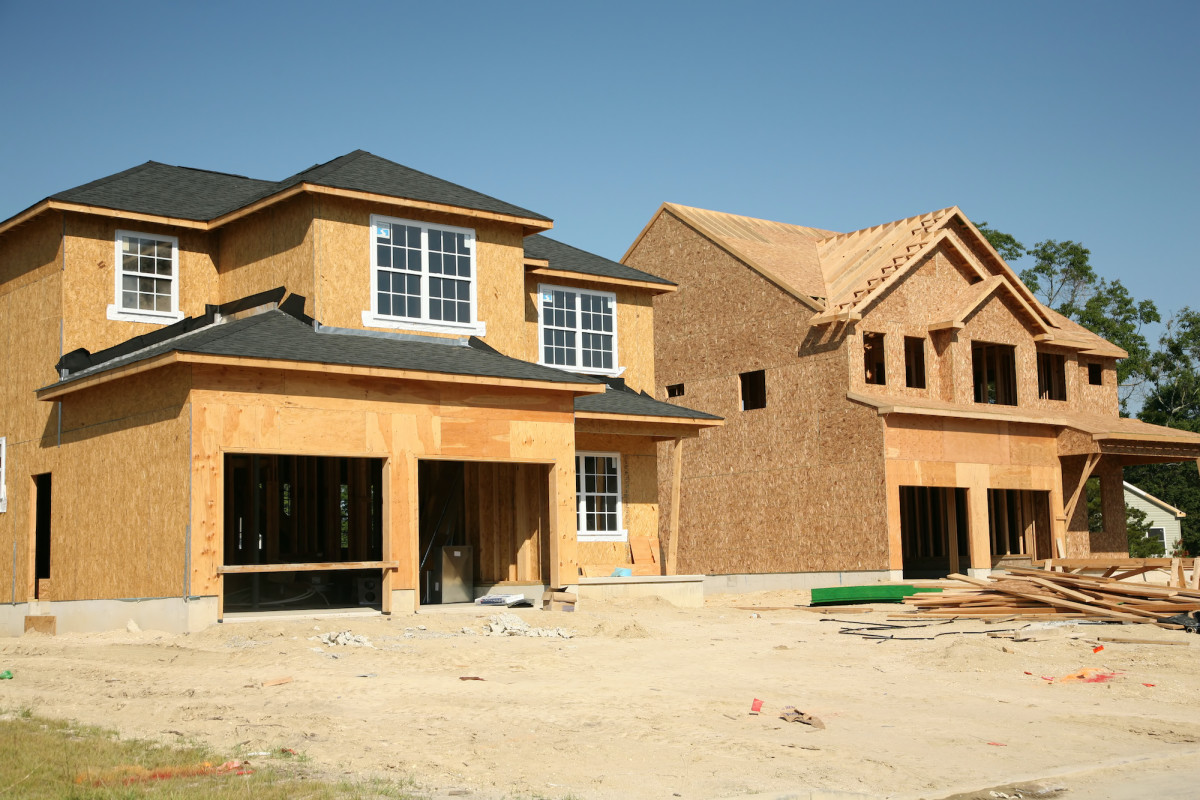

0 thoughts on “How To Start A House Construction”